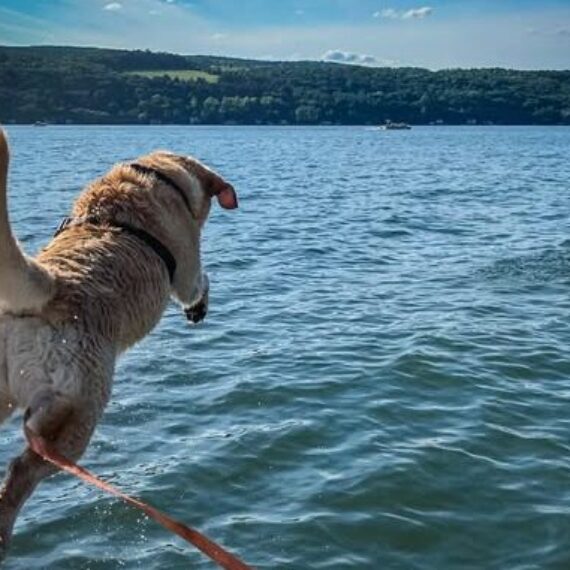Please enjoy this article written by one of CSI’s longterm HABs Harriers, James Edwards. This article was first included in the 7th HABs Newsletter of the 2025 season, compiled by the Cayuga Lake Watershed Network. James has been monitoring for harmful algal blooms on Cayuga Lake since our monitoring program began in 2018 on the western shoreline between Taughannock and Frontenac Point.

I have enjoyed being around the forests and waters of the Finger Lakes for my entire life. Since permanently locating in the Ithaca area in 1978, my wife Elise and I have enjoyed Cayuga Lake by swimming, diving, paddling and sailing at every opportunity. My favorite place on the lake is the North Point of Taughannock – specifically where the shoreline meets the block of the fascinating Tully Limestone. The occurrence of HABs in the Finger Lakes first was in my radar as a frequent lake user, and also through my work with a local environmental consulting firm. I attended most of the initial HABs presentations by the NYSDEC, the NYSDOH, Syracuse University, and the Finger Lakes Institute.
It was from these presentations that I learned more about CLWN, CSI, and the newly formed HABs Harrier program. I quickly volunteered for my favorite lake spot – North Point to Lower Barton Camp. Soon after, my wife and I saw a bloom unfold at a cottage we rented in July 2017 at the Busy Bee, in Sheldrake on the west shore. An acute micro-burst event loaded stormwater into the lake, and then we watched the iridescent, flashing, paint-like, rapidly sinking/rising blue-green bloom develop and extend from Sheldrake across to the east shore.
For my monitoring, I am frequently accompanied by Elise and energetic Lab Thora. We usually launch paddle-boats from North Point or the Barton Camp, and sometimes walk the shoreline around Barton Camp and the cottage road to the south. The parts I most enjoy about being a Harrier are of course my time at the Lake, and also being part of the group that collects samples and data regarding this threat. I believe it is critical to have any and all data collected and available for use by all the involved parties working on managing and regulating this threat to both the lake users and the lake habitat.
There have been several interesting sightings during my paddles. I found several Hellbender salamanders on the North Shore – I believe a natural die-off. It was fascinating to watch a fisherman catch a 5-6 foot sturgeon at the point [note to readers: It is illegal to fish for, or keep Atlantic Sturgeon. If you accidentally hook a sturgeon, be prepared to catch and release with great care!]. I sometimes play tag with a white mink that hunts in the blocks of the limestone that extends north from Taughannock. I am always looking for a couple of my favorite birds on the paddles – the diving Loons and the ever-present, circling Turkey Vultures.
I would strongly encourage anyone who lives in the area and cares for the lake watershed to become a Harrier volunteer. The collection of data and widespread awareness of the HABs threat is, to me, critical in moving the involved management parties forward with possible regulatory actions and best practices to protect the watershed. It would be great to see the volunteer network and CSI’s program grow for these critical monitoring and laboratory analysis tasks.




